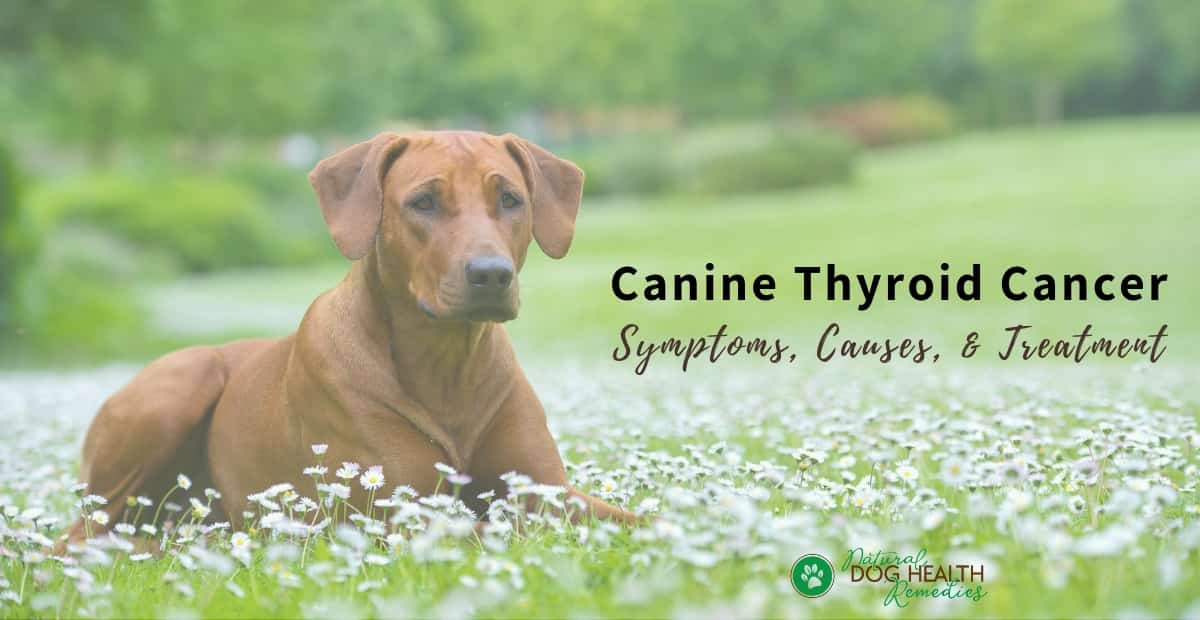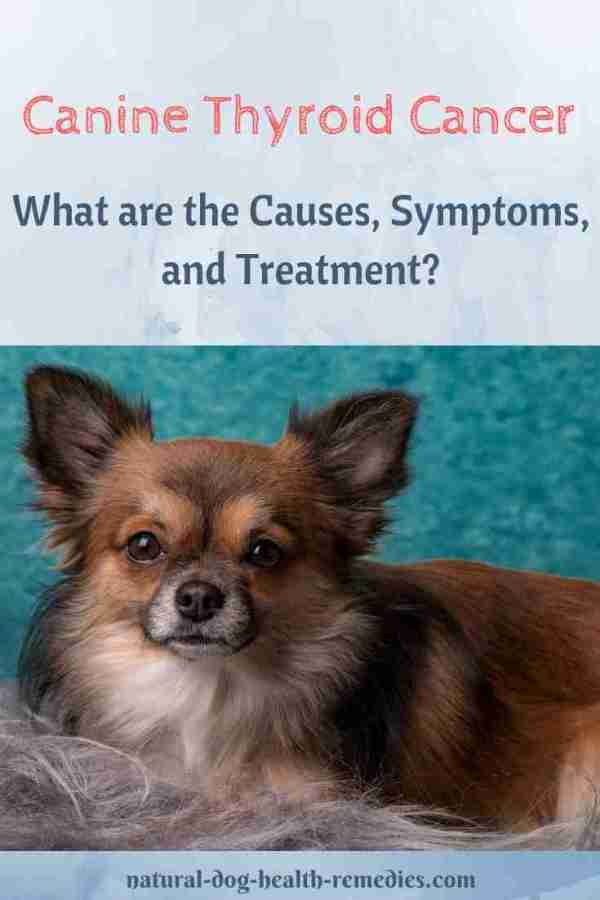Canine Thyroid Cancer

Overview
The thyroid glands are paired, lobed-like structures that wrap partly around the windpipe (trachea), about halfway down the neck of dogs.
The thyroid glands' function is to produce and release thyroid hormones (thyroxine and triiodothyronine). These thyroid hormones are vital for normal body function. Specifically, they regulate the metabolism of the dog's body.
Dogs do get thyroid cancer but this cancer is not as common as other forms of canine cancer such as bone cancer.
If you notice a mass in your dog's neck, don't panic just yet! Thyroid tumors can actually be either benign (adenomas) or malignant (carcinomas).
Benign & Malignant Thyroid Tumors in Dogs
Benign thyroid tumors tend to increase in size over time and cause thyroid glands to over-produce thyroid hormones.
Malignant thyroid tumors, on the other hand, seldom cause the problem of hormone over-production. Instead, they tend to spread both locally and to other parts of the body, especially the lungs and the regional lymph nodes. They can also grow into other structures nearby such as the windpipe, esophagus, and blood vessels.
Unfortunately for dogs, most thyroid tumors that arise (about 90%) are malignant and deadly (as you can see from this post.)
Canine thyroid cancer is more commonly seen in middle aged to older, larger breed dogs, such as boxers, beagles, and golden retrievers.
What are the Symptoms of Thyroid Cancer in Dogs?
One typical sign of thyroid cancer in dogs is a mass or swelling in the neck. The presence of the mass (tumor) will also cause other signs depending on how the tumor is affecting the neck area.
For example, if the tumor compresses the windpipe, the dog may cough and have difficulties breathing.
If the tumor presses against the esophagus, the dog may experience difficulty swallowing.
If the nerves of the voice box is affected by the tumor, you may notice a change in the tone of the dog's bark.
As mentioned above, most canine thyroid tumors are malignant, and they rarely produce excessive quantities of thyroid hormones.
Therefore, dogs with thyroid cancer rarely show signs that are associated with hyperthyroidism (e.g. restlessness, hair coat abnormalities or drinking and urinating more than usual).
What Causes Canine Thyroid Cancer?
Like other types of cancer, the exact cause of thyroid cancer is not clear. However, there are a couple of possibilities:
- Stimulation of the Thyroid Glands: One possible cause is believed to be stimulation of the thyroid glands over a prolonged period of time. (For example, a hypothyroid dog who has been receiving excessive dosages of thyroid hormones, or a dog who is on a diet that is excessively rich in iodine.)
This over-stimulation may progressively cause the thyroid gland cells to change. First, a part of the gland may experience abnormal cell overgrowth (a condition known as hyperplasia). This cell overgrowth may eventually form a benign tumor, which may then develop into a malignant cancerous tumor.
- Use of Fipronil: Another possible cause is the insecticide fipronil (as contained in some flea preventives such as Frontline®).
In fact, the U.S. Environmental Protection Agency classifies fipronil as a carcinogen (cancer causing substance) as they have found that exposing animals to fipronil in a lab caused benign and malignant thyroid tumors in such animals.
Also, according to the Journal of Pesticide Reform, fipronil can cause, amongst other things, "drastic alterations in thyroid function" in lab animals.
Some visitors to this site also commented that their dogs who had been using Frontline® developed thyroid cancer later on.
Diagnosis of Canine Thyroid Cancer
If you notice a mass on your dog's neck, you should get your dog to the vet immediately for a complete examination.
Tests to properly diagnose dog thyroid cancer include:
- Complete blood count
- Urinalysis
- Chest and neck X-rays
- Ultrasound or CAT scan (to assess the size and invasiveness of the tumor)
- Blood tests (to determine if the thyroid glands are functioning properly)
- Biopsy
Treatment and Life Expectancy
 For thyroid tumors that are freely movable, i.e. if they are not attached to the neck tissues, surgical removal is the treatment of choice.
For thyroid tumors that are freely movable, i.e. if they are not attached to the neck tissues, surgical removal is the treatment of choice.
If the tumor has not spread (metastasized) and if complete removal of the tumor is possible, a dog with thyroid cancer may live for up to 3 years after operation.
However, if the tumor is invasive and is attached to the underlying tissues, life expectancy is much shorter (about 6 months to one year).
Radiation or chemotherapy is often recommended for tumors that cannot be completely removed, or are too large for surgical removal.
Radioactive iodine treatment is also sometimes used to treat canine thyroid cancer.
A study by Massey University Veterinary Teaching Hospitals shows that radioiodine treatment, either used on its own or as an adjunct to surgery, is effective at extending survival time of dogs suffering from thyroid cancer.
The study recommends radioiodine treatment for cases where surgery alone is difficult to achieve good results because of metastasis or local invasion, or for cases where complete surgical removal has not been achieved.
However, not too many veterinary hospitals and facilities offer this treatment option since it involves the handling of high doses of radioactive iodine.

Have You Considered Natural Remedies?
Eldredge, et al. Dog Owner's Home Veterinary Handbook 4th edition (Wiley Publishing, 2007).
S. Messonnier, The Natural Vet's Guide to Preventing and Treating Cancer in Dogs (New World Library, 2006).





